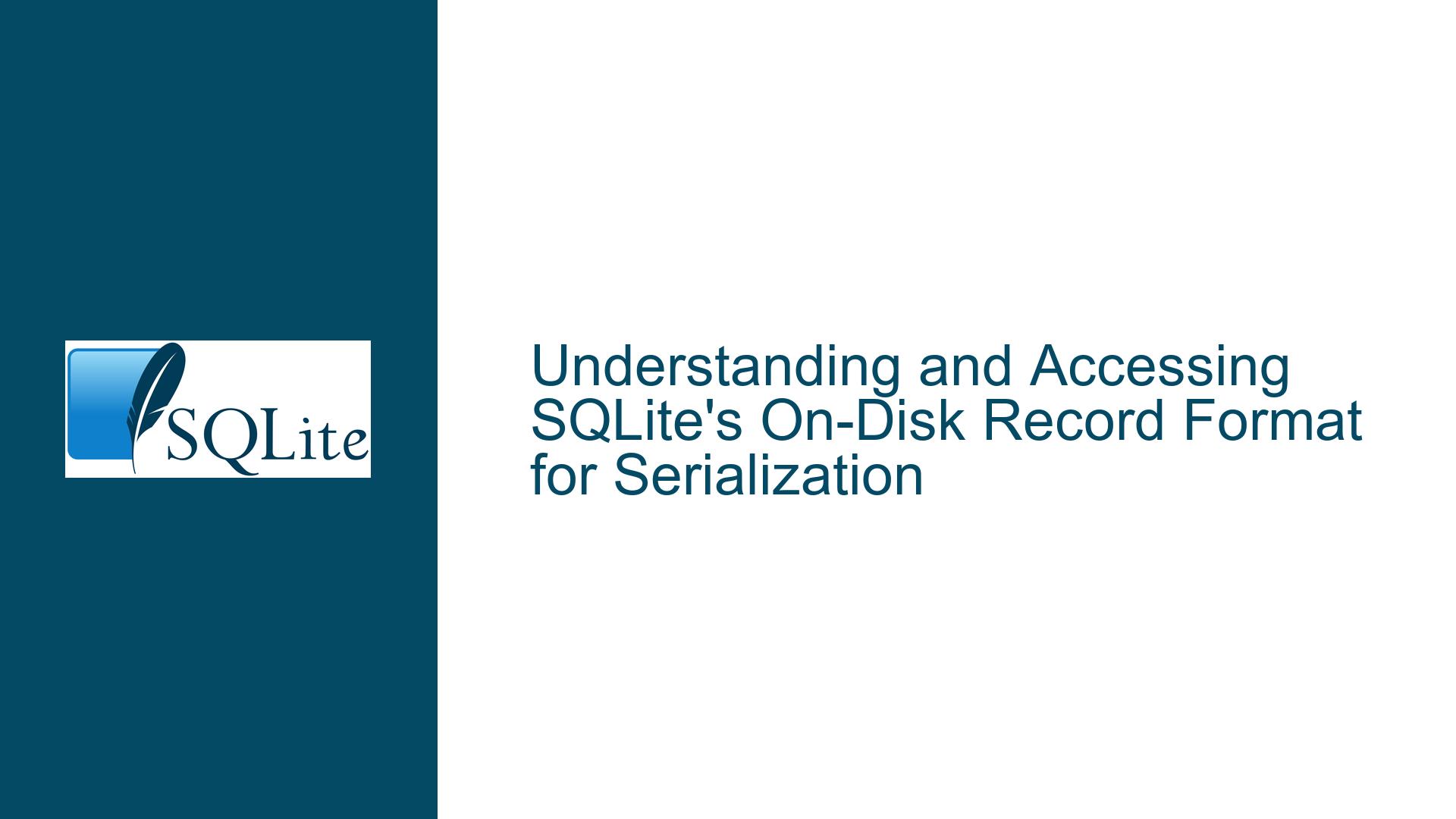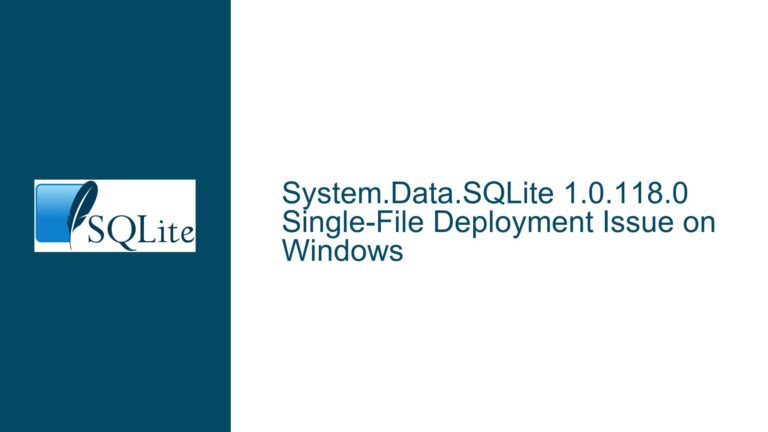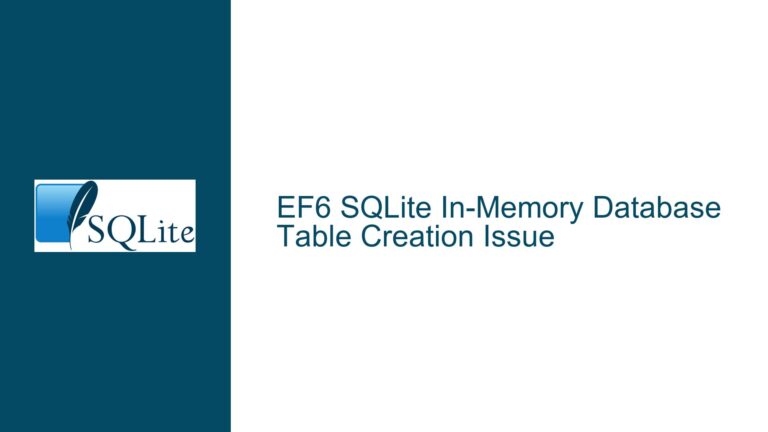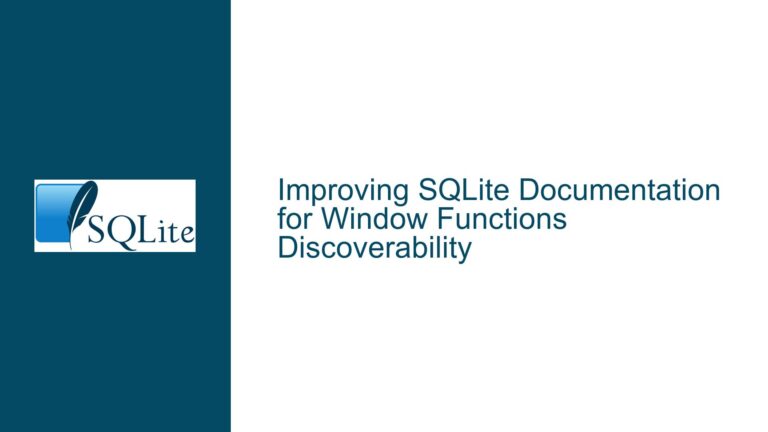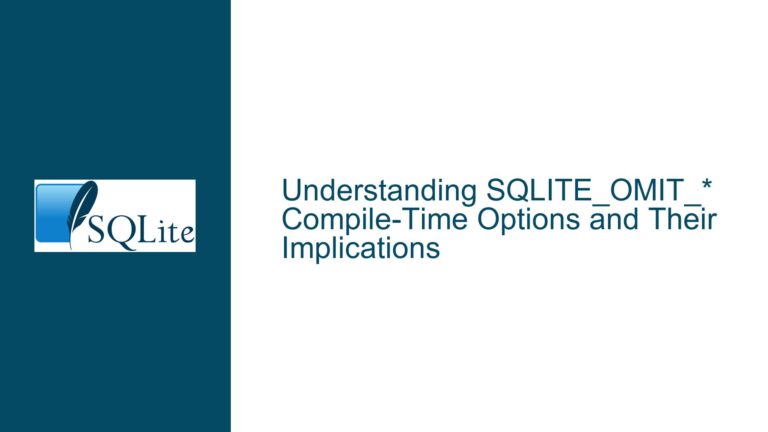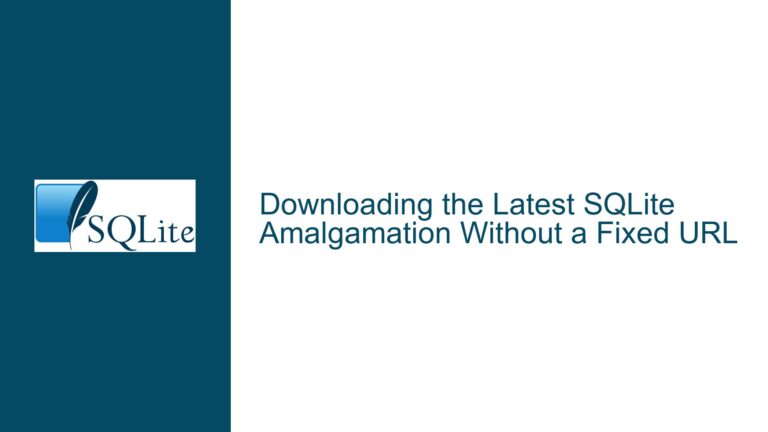and Accessing SQLite’s On-Disk Record Format for Serialization
SQLite’s On-Disk Record Format and Its Stability
SQLite’s on-disk record format is a critical component of its database engine, responsible for how data is stored and retrieved from the database file. The format is well-defined and documented at SQLite’s official file format documentation. This stability ensures that databases created by older versions of SQLite can be read by newer versions and vice versa, provided that the newer versions do not introduce features unsupported by the older versions. This backward and forward compatibility is crucial for applications that rely on SQLite for data storage, as it guarantees data accessibility across different versions of the software.
The record format is optimized for performance, with the encoding and decoding processes being among the most CPU-intensive operations SQLite performs. These operations are tightly integrated into the SQLite engine, specifically within the Virtual Database Engine (VDBE), to maximize efficiency. The format includes mechanisms for handling various data types, indexing, and schema management, all of which are designed to ensure data integrity and quick access.
However, the internal mechanisms that interact with this format, such as the byte code and the interface between the byte code engine and the b-tree layer, are subject to change. These changes are necessary for performance improvements, bug fixes, and the addition of new features. Despite these internal changes, the on-disk format remains stable, ensuring that the data itself remains accessible and consistent across versions.
The Need for Direct Access to SQLite’s Record Format
There are scenarios where direct access to SQLite’s record format could be beneficial. For instance, developers might want to serialize or deserialize SQL values into a byte string for purposes such as data transmission, storage optimization, or custom data processing. Serialization involves converting a data record into a format that can be easily stored or transmitted, while deserialization is the reverse process.
Currently, SQLite does not provide a public API for directly encoding or decoding records in its on-disk format. This limitation is by design, as exposing these functions could lead to performance degradation. The encoding and decoding processes are highly optimized and inlined within the SQLite codebase to minimize overhead. Introducing a separate function for these operations would likely result in a measurable drop in performance due to the additional function call overhead and potential loss of optimization opportunities.
Despite this, some developers have attempted to implement their own versions of these functions. However, this approach leads to code duplication and inefficiency, as the same functionality is reimplemented outside of SQLite’s optimized codebase. This not only increases the risk of bugs but also makes the code harder to maintain and less performant.
Implementing Custom Serialization via SQLite Pragmas
One proposed solution to the need for direct record format access is the introduction of new SQLite pragmas. Pragmas are special commands in SQLite used to modify the operation of the SQLite library or to query the current state. The idea is to add pragmas that would allow the preparation of VDBE programs for encoding and decoding records. These pragmas would leverage existing SQLite functionality, such as the Variable, OpenPseudo, Column, and MakeRecord opcodes, to interact with the record format without exposing the underlying implementation details.
For example, a pragma could be defined to prepare a VDBE program that extracts data from a record using the Column opcode. This would allow developers to serialize records into a byte string without needing to understand or interact with the internal record format directly. Similarly, another pragma could be used to prepare a VDBE program that constructs a record from a byte string using the MakeRecord opcode, enabling deserialization.
This approach has several advantages. First, it minimizes changes to the existing SQLite codebase, as it builds on top of the current VDBE infrastructure. Second, it avoids the performance overhead associated with moving the encoding and decoding logic into separate functions, as the operations would still be performed inline within the VDBE. Finally, it provides a clean and consistent interface for developers to work with, reducing the need for custom implementations and the associated risks.
However, there are also challenges to this approach. The primary concern is ensuring that the pragmas are implemented in a way that does not compromise the performance and stability of SQLite. This requires careful design and testing to ensure that the new pragmas integrate seamlessly with the existing codebase and do not introduce any unintended side effects.
In conclusion, while SQLite’s on-disk record format is stable and well-defined, direct access to it for serialization and deserialization purposes is not currently supported through public APIs. The introduction of new pragmas to facilitate these operations could provide a viable solution, offering developers the functionality they need without compromising the performance and integrity of the SQLite engine. However, this approach requires careful consideration and implementation to ensure that it meets the needs of developers while maintaining the high standards of performance and reliability that SQLite is known for.
